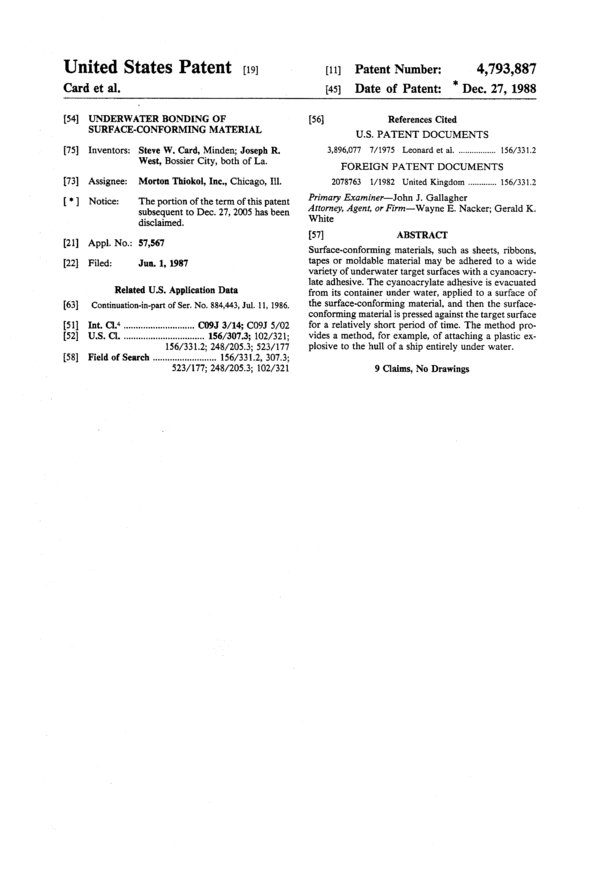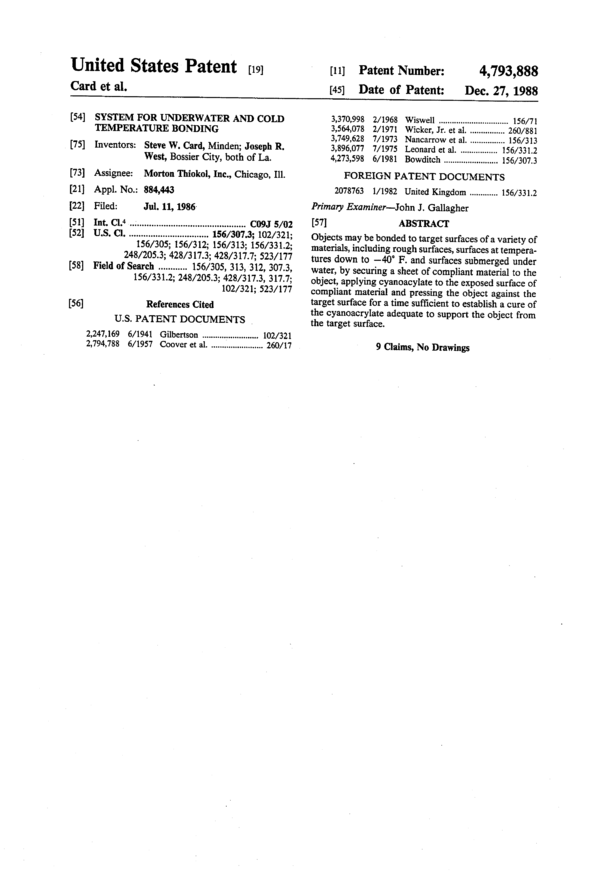Underwater Adhesive
Underwater bonding using a cyanoacrylate composition sounds contradictory for anyone who has had some experience with such adhesives. Water has the ability of initiating polymerisation of cyanoacrylates, one would therefore tend to consider it unsuitable for underwater application, as it should in theory polymerize as soon as in contact with water before anything could be bonded with it. But two groups proved differently between the 1970s and the 1980s.
The main purpose of these patents was directed to the attachment of explosives to underwater targets for either construction or military use, though dental applications, underwater repairs as well as tagging of sea mammals are also cited.
The very first set of patents on this topic was written by Fred Leonard and George Brandes and published in 1971. The composition included a cyanoacrylate (hexyl, heptyl and octyl were the monomers giving the best results) and a filler that had to be insoluble in water and the CA, preferably weakly alkaline and finally inert to the CA. The role of the filler was to give a paste-like consistency to the formulation and also ensured it would not dissolve in water when trying to apply it. The filler in question was a mixture of calcium carbonate and amorphous silica.
The second set of patents was published in 1988 by Steve W. Card and Joseph R. West for Morton Thiokol, a company that produces military-related products. Here commercial Permabond high viscosity cyanoacrylates were used to conduct the experiments. Using one surface-conforming material and one surface than could be both rough or smooth, bonds would last for approximately three days.
Card et al. also theorize that the reason why CAs actually work underwater is due to the heat extracting properties of water and the rapid cure it induces. They suppose that under these conditions, the exothermic polymerization is stopped, making the cyanoacrylate composition effectively self-encapsulating.
Given the non-durability of such bonds, whether there are many uses for such application or not may not be the question to ask when discussing this topic, but rather that it is quite an unexpected and original one.





